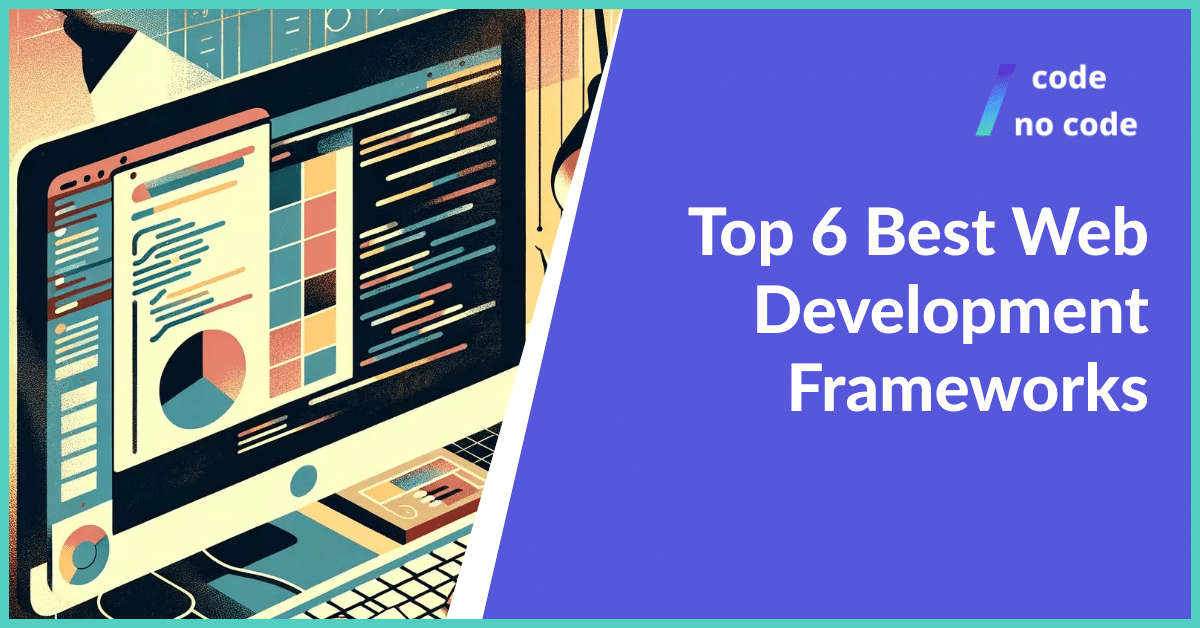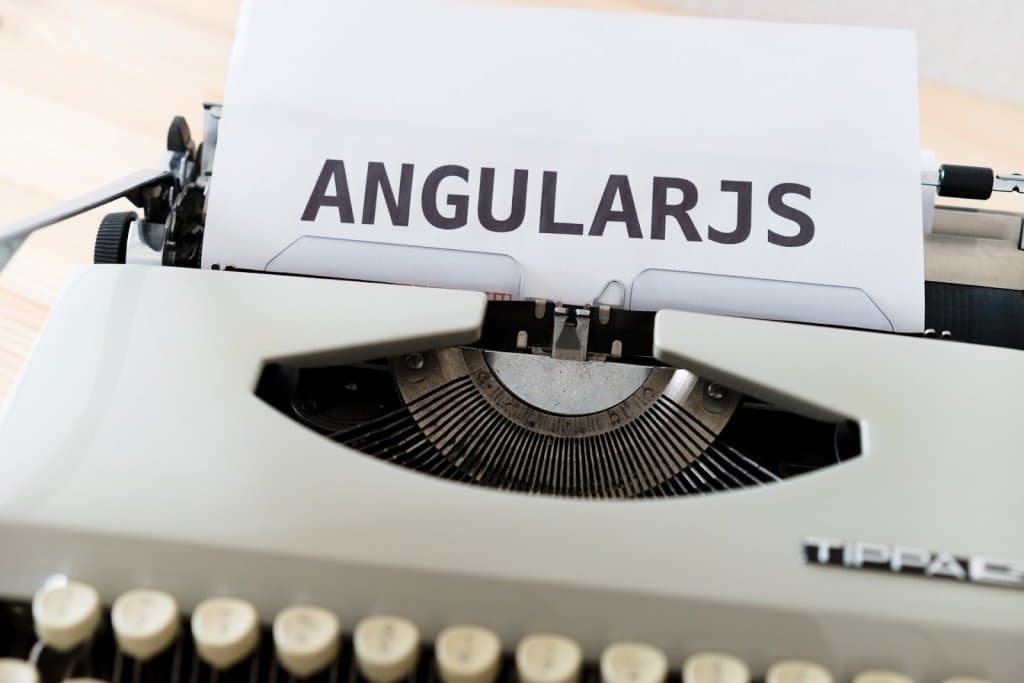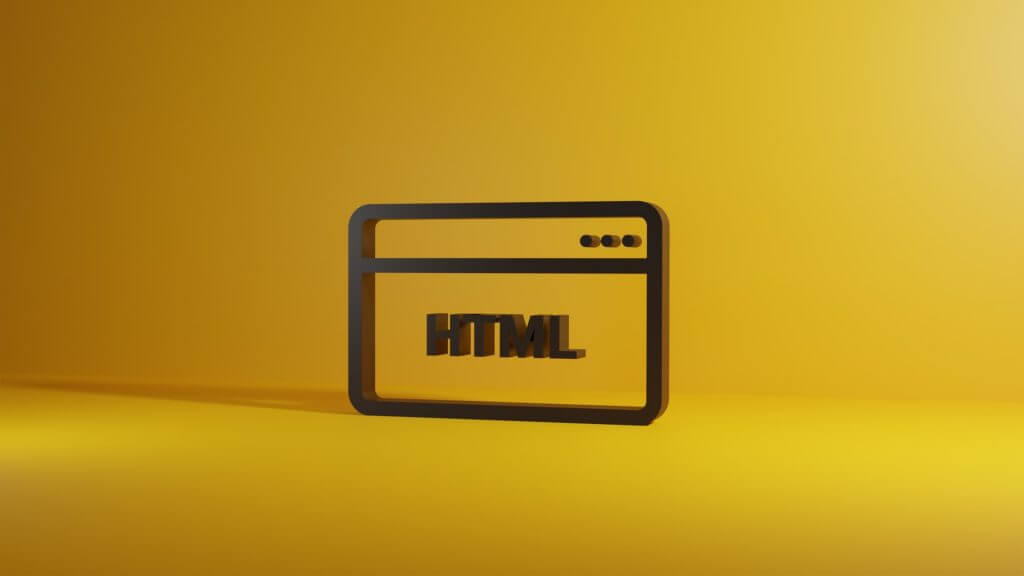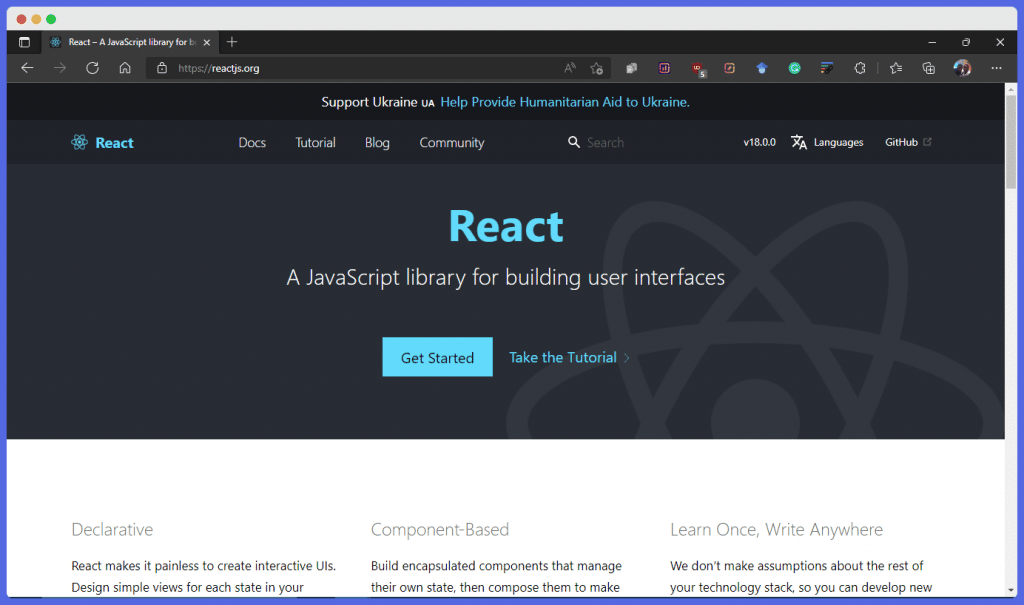
Top 6 Best Web Development Frameworks
Do you want to build dynamic web applications? Or are you more interested in developing mobile and desktop applications? Perhaps you are about to undertake some complex...
Developing web applications traditionally relied on the big three. HTML – for basic web page layout. CSS which is for visual styling. And JavaScript – for enabling the interactive interface of web applications. Experienced developers still use those three development tools to design dynamic web applications. This implies them writing HTML, CSS, and JavaScript code from scratch. And repeating the process each time they underwent new web projects. Of course, that approach is still very much in use. However, companies like Meta have found that web development does not have to be so tedious. As such, innovative technologies called frameworks have found ground in the development world.

To develop a web app today, developers need not rely directly on writing code ab initio. Instead, web developers can create a well-designed scalable site relying solely on these new technologies.
This brings us to the question of “what is a frontend framework?” But before that, let’s backtrack a bit in history. We need to know how web development frameworks have changed over the years.
| Name | Year | Type | Brief Overview |
| jQuery | 2006 | Library | The first JavaScript library was established to solve antecedent compatibility problems. Also, one of the easiest and most popular frontend frameworks for designers to learn as it uses familiar CSS syntax. Deprecated in 2021. |
| CSS frameworks | 2007 | Framework | UI frameworks using ready-to-use stylesheets for standardized web design with a typically tight learning curve. They are great for building user interfaces with rich modules and receptiveness |
| Backbone | 2010 | Library | A JavaScript framework that uses key-value binding and other tools typically for creating SPAs and synchronizing web apps |
| Angular JS | 2010 | Framework | One of the first frameworks for modern front end development. Uses two-way data binding to make creating dynamic web applications easier |
| Ember | 2011 | Framework | Powerful open source front end framework designed for creating maintainable and reusable mobile and desktop based JavaScript applications |
| React | 2013 | Library | Excellent JavaScript component based library for building scalable and fast web applications with one way data binding. Also enabled simplification of JavaScript code through AJAX requests handling and virtual document object model DOM functionality |
| Vue | 2014 | Framework | Lightweight and open source framework especially for developing single-page applications and interactive user interfaces |
| Angular | 2016 | Framework | The rewritten version of Angular.js development framework using TypeScript. Contains numerous reusable code components for rapid development of web applications |
| Svelte | 2016 | Framework | Not one of the more popular frontend frameworks in the JavaScript library. But finds use especially in the building of progressive web apps |
In 2023, there are even more promising software development frameworks in the market. And even more updates on existing ones. But more on that later. For now, let’s understand what these aforementioned terms mean exactly. That is, frameworks, backend, and front end frameworks.
Have you also considered No Code tools as a part of your development stack? Read more about them in our article on What is No Code.
Frameworks refer to a set of software tools or platforms available to web developers. With them, developers can build well designed scalable sites and web applications. One of the major features of most frameworks is the use of reusable components or code. The reusability of code, among other features of frameworks, tends to hasten the development process. Frameworks may include code libraries, compilers, APIs, and the likes. As determined by the principle of Inversion of Control[1] (IoC).

Photo by Markus Winkler on Unsplash
A web framework can either be a back end or a front end framework. A front end framework refers to a software platform or tool used for the visualization of back end instructions in the user interface. Backend frameworks consequently deal with the functionality section of web applications and services. It basically tells the user interface what to do. But for the sake of detail, we will only be discussing front end frameworks.
Using boilerplate code through modern frameworks can help developers maximize time[2] and effort. This eventually implies rapid front end web development but that is just a vague benefit. We’ve already mentioned the shell fact that front end frameworks help front end development. But in what ways does it achieve this exactly?
The heart of all websites, web apps and web services you use is the user interface. Or more specifically, the DOM. The DOM is an API used to define the logical structure of HTML or XML documents. In simple terms, it represents the user interface of any web application.
Direct DOM manipulation through JavaScript meant inefficient updating among other woes. This ultimately meant rather slow operation of modern websites. This is an especially big problem since modern sites require large extents of DOM manipulation.
In response to this drawback, we now have the Virtual DOM. Without much detail, the Virtual DOM is a lightweight construct of the actual DOM.

Photo by Greg Rakozy on Unsplash
It represents a copy of and with the properties of the real DOM. When the Virtual DOM updates, the actual DOM remains unaffected. Illustratively, coding on the Virtual DOM represents editing the blueprint of a home. Whereas direct DOM manipulation implies moving rooms within the house.
This approach lets only the changed objects update on the real DOM. And this ultimately aids rapid frontend development. Declarative front end frameworks like Vue.js and React offer virtual DOM functionality.
A lot of the most popular front end frameworks have huge and active communities. Such an ecosystem of tools and access to front end developers’ opinions helps. For one, it makes learning the framework easier.
More so, frontend frameworks typically have tools to semi-automate sub-activities such as testing and linting.
One of the key principles of front end frameworks is compartmentalization of code. By that we mean, front end developers should create components that abstract parts of their code. These components would be maintainable, related, and reusable for other specific applications.

Photo by Jackson So on Unsplash
Document navigation on the web is the most important feature of any web application. After all, the web is just a collection of interlinked documents translated into web pages. Initially, web apps send requests through browsers to servers for each new HTML file. Only after that does rendering take place. Professionals aptly refer to the former as server side routing. And the latter process as server side rendering.
The modern web app fetches a single HTML shell and consistently updates its DOM. That is how single-page applications (SPAs) work. Server side rendering and routing using “vanilla” JavaScript solutions is still possible. But with front end frameworks, the process is considerably more intuitive.
The first thing to note before choosing a front end framework is that there is no such thing as a “one size fits all” front end framework. There is no general best frontend framework, but there are best frontend frameworks for your specific web project.
While frameworks function similarly, they use different approaches for doing the same things.
There are other factors that impact companies’ choice of one over other frameworks. This is besides the differences in function of the frameworks. One of such factors is the core strength of their frontend development team. Here are other factors to look out for in choosing the right framework for you:
Businesses are more likely to gain with a mobile-first approach to frontend development. At least that’s what’s statistically indicated[3]. This is more so the case with the advent of cross-platform Progressive Web Apps (PWAs).

A framework’s capacity to build mobile apps gives it an edge over other frameworks. jQuery was every front end developers’ favorite for mobile app development[4]. More specifically, jQuery Mobile, which is a UI framework built on jQuery and geared towards mobile app development.
Frontend developers utilized jQuery more for creating desktop based JavaScript applications. Unfortunately, It was deprecated on October 7, 2021. The choice of the best front end frameworks is now split between, Angular Mobile, Vue.js, and React Native.
This factor is quite obvious but typically overlooked. The captivating sites and promise of high performance may get you excited. But what would really help is if there is the availability of learning resources.
This is especially true when you are trying to learn a frontend framework. You are likely to encounter several difficulties. In such a case, it is a huge plus if you have an active community you can ask questions through your learning process. Or tools you can use to complete complex tasks.
Thankfully, all of the top 10 frontend development frameworks have vibrant communities.

Photo by Ferenc Almasi on Unsplash
Frontend frameworks use different core programming languages. Some of the best frontend frameworks are JavaScript frameworks. However, there are other popular and promising frontend frameworks based on other languages.
CSS frameworks like bootstrap or semantic UI are examples of frontend frameworks based on CSS – a style sheet language. Semantic UI is a rather new frontend framework in the ecosphere. But it is quickly finding ground as a very simple framework for a rich and interactive interface.
This also relates to the factor of the frameworks’ community. But more specifically, the reviews and popularity among users[5]. If a framework is relatively popular among users, then it must be doing something right. This is the case for almost any JS framework.
The framework you use largely depends on what projects you are to embark on. You should first identify what features would simplify aspects of such complex projects. And then look for frameworks that offer such features.

For instance, say you worry about complex DOM manipulation. Angular uses two way data binding. And this ultimately serves to reduce complex DOM manipulation. In the development of robust web apps and SPAs, React is a good choice. Or in case you require more theming and simplifying complex user interfaces. Semantic UI is just right.
Some of the easiest frameworks have some of the highest performance and functionality. A good example is the rather novel Semantic UI and the older React.JS.
Of course, React doesn’t use the quasi-English syntax of Semantic UI. However, it is considered one of the easiest frameworks to learn. Still, it stands tall as a lightweight framework with robust functionality and a lenient learning curve.
The learning curve of frontend frameworks such as Ember.js is rather steep. This obviously is a poor choice for beginners.
Other factors like ease of integration with any other open source library and server side rendering are also important to watch out for.
All in all, frontend frameworks have become an integral part of web app development. It’s difficult to imagine the future of the web without them. Thankfully, you are now armed with information about what frameworks really are. What’s left is for you to use it.
Be sure to look into No Code tools to optimize your software development process even more and make it up to 10 times faster.
Also, don’t forget to follow us on Twitter to get regular updates on the No Code industry.